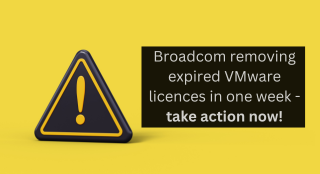Forgotten, but not lost: the critical role of license dongle management
The following article from Abhik Chowdhury, Content Writer at OpenLM explores the critical, but often overlooked, role of license dongle management.
If we take into consideration that an enterprise device has, on average, 67 applications installed, and that 10% of those have more than 100 apps installed, then just counting with one or two license dongles per device in an environment of 10,000 users leads to a huge inventory of license dongles. Without a tool or multiple tools to manage those license dongles, IT admins and hardware asset managers lose track of the inventory, which leads to IT chaos in the environment. And that always punches a hole in the IT budget for reasons such as paying for unused licenses or compliance issues due to the use of blacklisted devices.
Understanding license dongles
A licensing dongle, sometimes known as a license key, is a hardware-based electronic device that provides copy protection, unlocks software, and decodes protected material. License dongles are used to prevent piracy and the distribution of valuable applications without authorization, as well as to enable software monetization options. There are multiple license dongles available in the market, provided by a variety of vendors such as Keylok, Guardant, Microcosm, SecuTech Solutions, and the like.

License dongles play an important role in software monetization for many vendors. While there is a noticeable trend for moving away from hardware license keys toward software keys, many companies prefer a flexible option where they deliver licenses via hardware, software, or the cloud, depending on the customer’s preference, Mikhail Chuckhlomin, business development manager of license dongle vendor Guardant, told us in an email interview.
“For something that seems like an old-fashioned solution, dongles are still surprisingly popular. I think part of that is because it is an easy licensing model to understand (customers can see the licensing as a physical device) and also because the concept of a physical software-protection dongle is well known,” Martin Payne, business leader of UK-based dongle vendor Microcosm, told OpenLM is an email interview.
Challenges in license dongle monitoring
Going back to Absolute’s finding an abundance of apps running on a single enterprise device, plus adding to the mix the omnipresence of license dongles, we start to understand the challenge such small devices present in an enterprise environment. Just take a look in your drawer: how many USB dongles do you have? Or just consider your family: how many USB dongles you have?
Managing a few dongles is easy when the people using them are next to you. But what happens when there are several thousand tokens spread across the globe? That’s a real challenge, which IT managers and hardware asset managers need to deal with. To manage such a situation, they need to have answers to a handful of simple questions:
- How many license dongles we have?
- Where are they located?
- Who is using them?
- Are all dongles in use?
- Were any tokens stolen?
Methods for license dongle monitoring
Each hardware key vendor provides its customers with software and a user interface to manage the tokens. The challenge arises with the number of applications using such dongles. The number of dongle management interfaces exponentially increases according to the amount of software licensed by the company. That means a dedicated person for monitoring and managing the company’s hardware keys, which is a full time job, as he or she needs to access every user interface one by one to obtain the data the management requirements when planning the IT budget.
Best practices for hardware key monitoring
An efficient dongle management system builds a bridge between all existing dongle management software and user interfaces, and creates common ground for tracking and reporting. Simply put, if you want to turn IT chaos into clarity, or want to shed light on the actual usage of the existing dongle inventory, it’s a much easier, and time and money saving process to access only one interface where you can check the utilization of the tokens.
Use the software provided by the vendor
It is possible to manage them via the interface provided by the vendor, but that is time consuming and inefficient. Since each vendor has its own interface, you won’t get the big picture but only a part of it. When it comes to utilization, you need the full picture, not just a piece of the puzzle.
The best license dongle management software gives you the right toolset to track and manage all the hardware keys the company owns. It delivers you reports about whether the dongle was used, for how long, when, and by whom. These are pivotal questions you should have an answer to at a glance, regardless of the dongle vendor.
Don’t lose track of them
Since dongles are tiny pieces of hardware, the risk of losing them is high. A company may end up with tens or hundreds of lost or stolen devices. As a result, you will not only be paying for software that is not used by your employees and secondly but also, without a system that reports the device as lost, you’ll be allowing unauthorized use of the software you’re paying for.
Sign up for a third-party license dongle management service
By implementing a dongle management system – either built in-house or a third-party one – you gain visibility of these hardware assets. You gain access to a real-time monitoring and alert system that gives you total control. Such a system creates a single system of record for all license dongles – or any type of USB dongles – and you as an IT admin will have the right toolset to understand who is using the token, for how long, and where is that person located. In addition, you can easily blacklist the dongle and ask for a replacement without breaching your agreement with the software vendor.
The real-time alert system will warn you immediately via the preferred communication channel if the blacklisted device is connected to the network; therefore, you eliminate compliance risk.
Conclusion
In conclusion, dongles are surprisingly popular for what appears to be an old-fashioned answer to software licensing. This is due in part to the simplicity of the licensing model (customers can view the licensing as a physical item) and the well-known idea of a physical software-protection dongle. Furthermore, some people believe that a physical dongle is more secure than a software-based licensing solution. So, finally, a quick question: have you created your own survey to find out how many dongles your company owns? Maybe it’s time to turn your attention to these small devices as well.
Can’t find what you’re looking for?
More from ITAM News & Analysis
-
How ISO/IEC 19770-1 Can Help Meet FFIEC Requirements
In the world of ITAM, the regulatory spotlight continues to intensify, especially for financial institutions facing increasing scrutiny from regulatory bodies due to the growing importance of IT in operational resilience, service delivery, and risk management. ... -
Microsoft Q3 Soars as AI and Azure Growth Fuels Market Gains
On the 30th April, Microsoft released its Q3 quarterly earnings report, exceeding expectations and igniting investor optimism. Investors had been keeping a watchful eye on Azure’s Cloud performance after Microsoft’s Q2 Cloud results fell short of ... -
AI and ITAM: State of Play 2024 Research Report
In 2024, the ITAM Forum and General Interfaces conducted a global survey (On behalf of the ITAM Forum’s AI+ITAM Working Group) targeting ITAM practitioners, executives, and stakeholders to explore the growing influence of AI on the ...
Podcast
ITAM training
Similar Posts
-
Broadcom is removing expired VMware licences from its portal - take action now!
Hot on the heels of Broadcom’s announcement of the end of perpetual licences for VMware it has given customers barely a week to download any keys for licenses from its portal with expired support. This is ... -
Who Loses When Broadcom Wins?
News of a new Broadcom deal rarely arrives with great fanfare. The November 2023 VMware acquisition provoked open worry online and in business circles, with many critics wondering whether the former Hewlett-Packard spinoff’s reputation would prove ... -
Software Vendor Insights: What do the numbers tell us about the opportunities for ITAM negotiations?
What software vendor insights can be gained from the latest financial results from Amazon, Google, Broadcom, Salesforce, IBM and SAP? An important part of ITAM is paying close attention to the health of the companies we ... -
Enterprise Technology Management podcast with Oomnitza: ITAM evolution?
What is Enterprise Technology Management? In this podcast we sit down with Arthur Lozinski, CEO and Co-Founder of Oomnitza, to talk about the changing face of asset management within a modern business. We look at how ...




